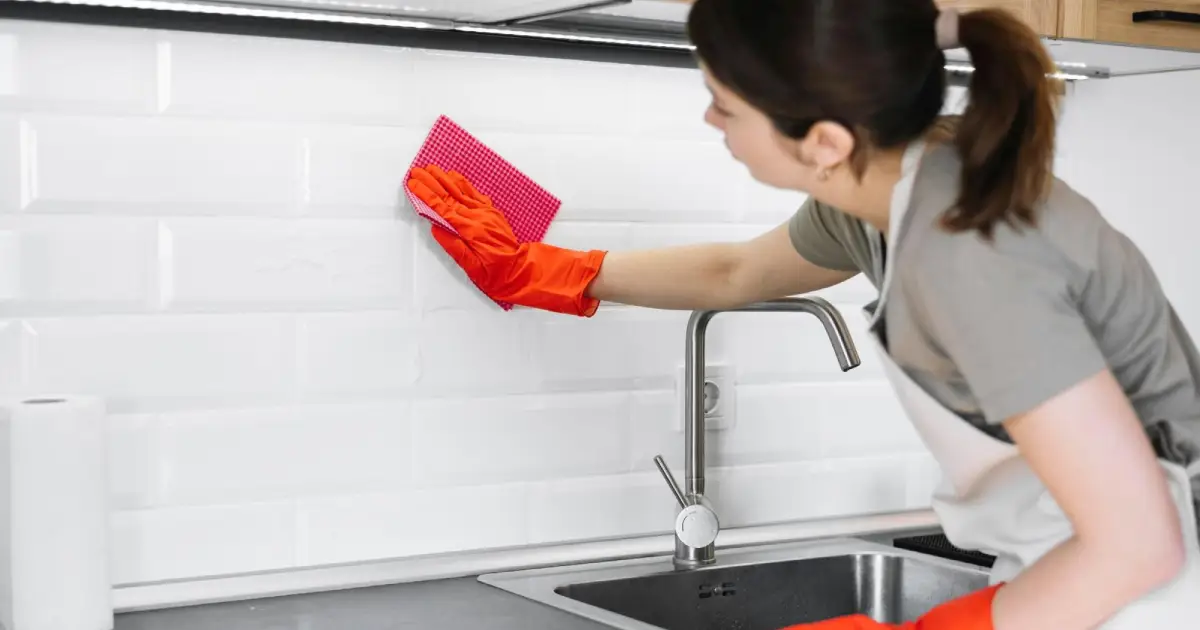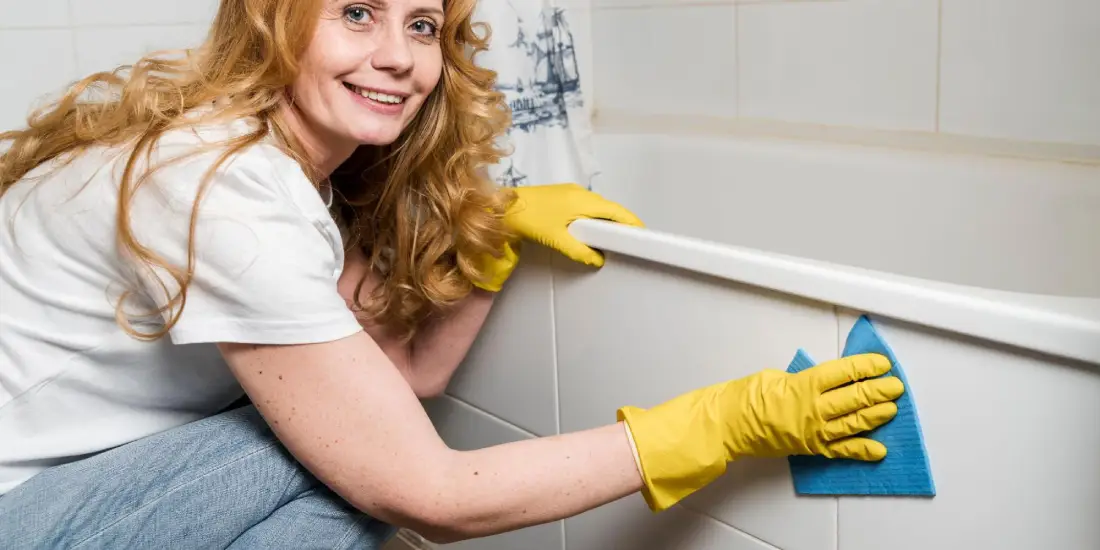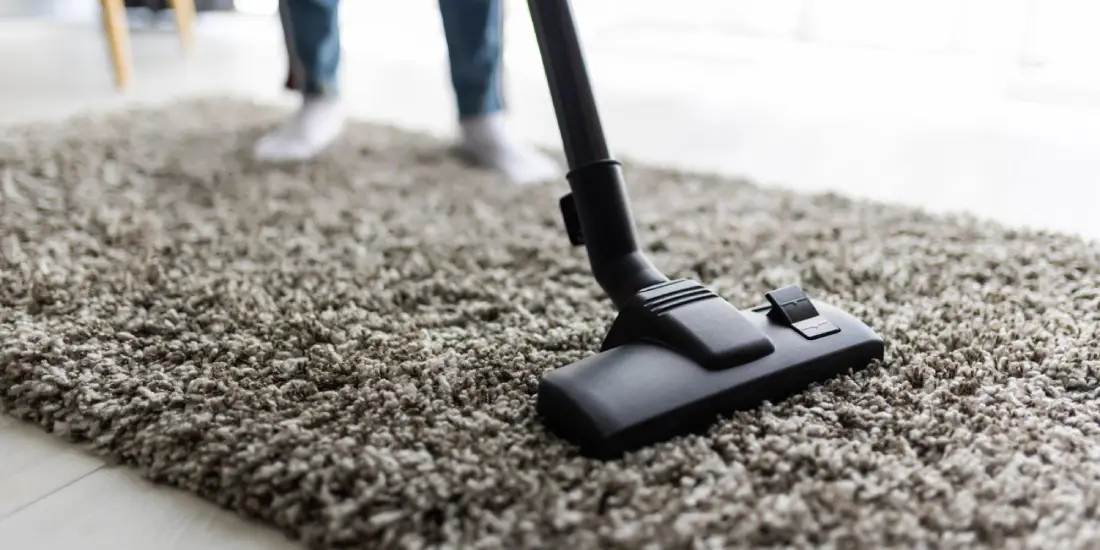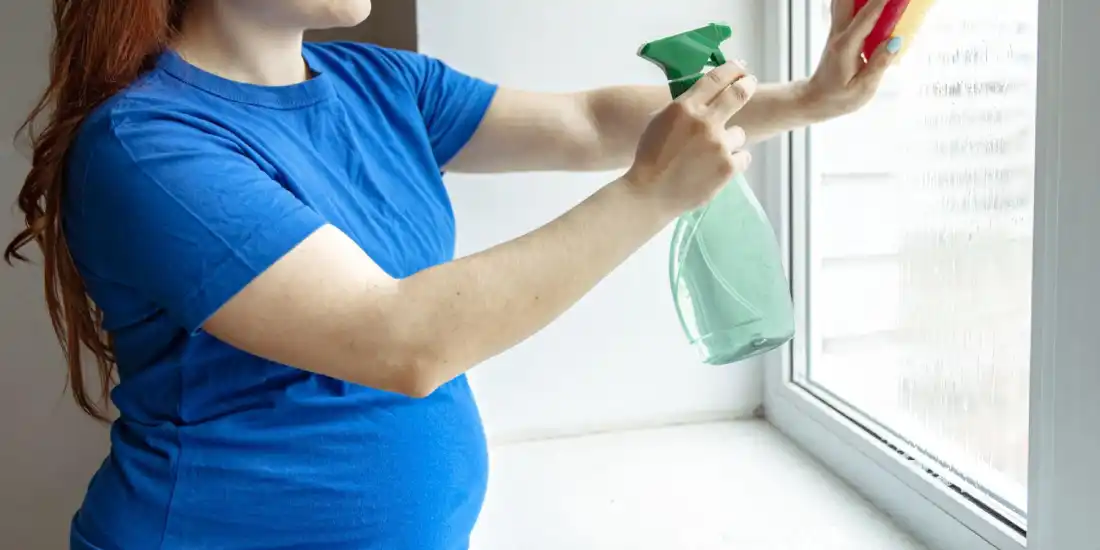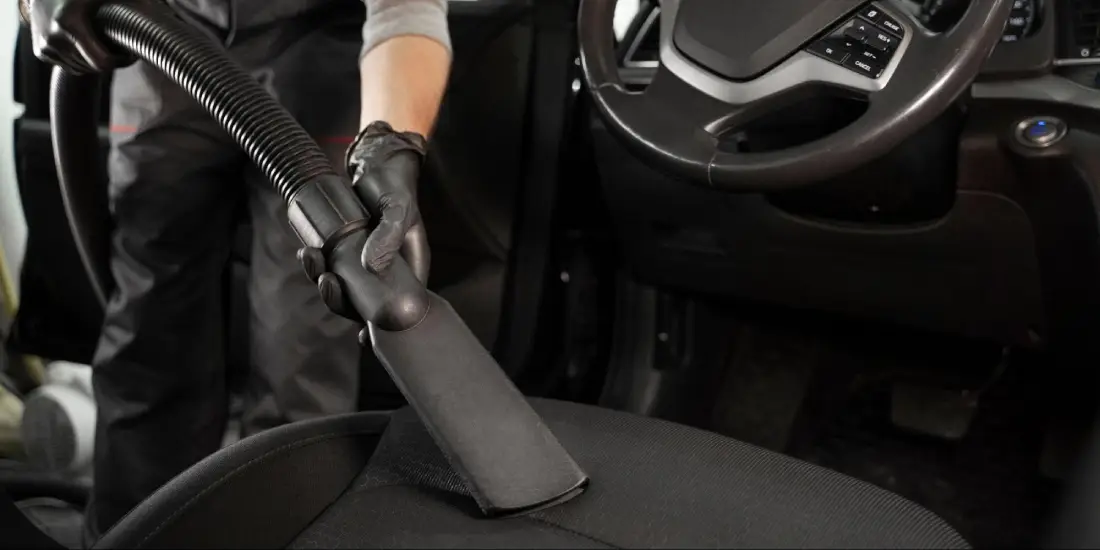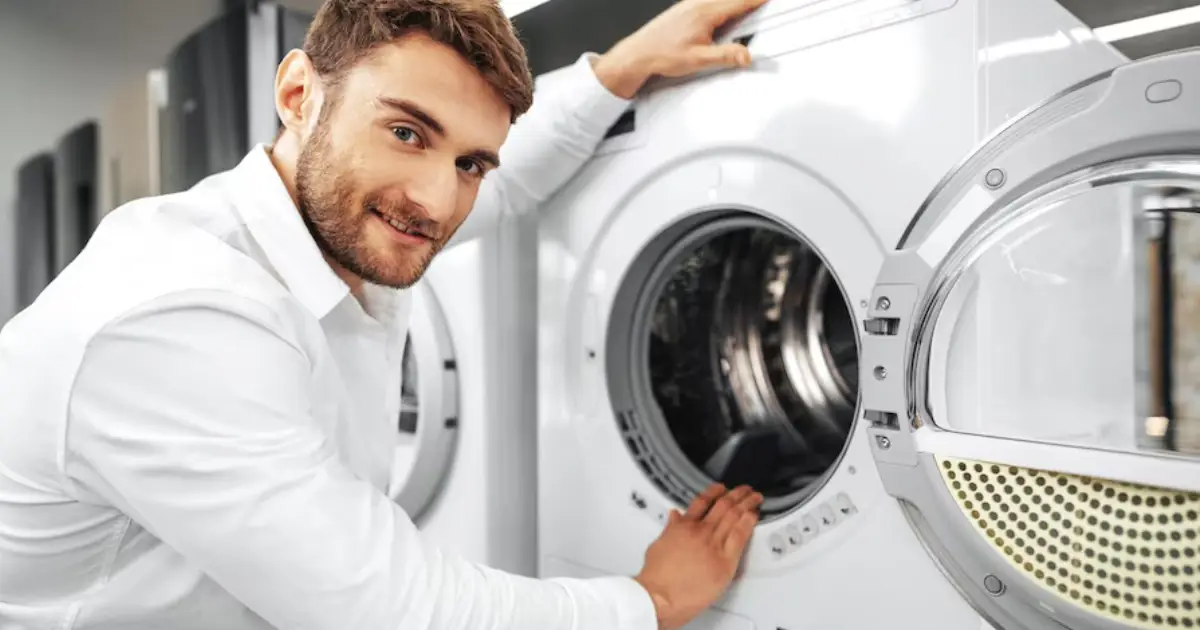
Introduction
Washing machines that load and unload clothing through a door on the front are known as front-loading machines. They are renowned for being more energy and water efficient than top-loading machines, using less of both and thereby reducing utility bills and minimising environmental impact. They are appropriate for heavier loads and are gentle on clothing, increasing the life of the garments because of their larger capacity and gentle tumbling movement. Front-loading machines have a greater initial cost which is a disadvantage. Also, accessing the drum from the front would necessitate bending or kneeling, which might not be convenient for people with challenges with mobility.
A front-loading washing machine will need routine cleaning and maintenance for several reasons. It promotes energy efficiency, extends the life of the machine, avoids clogs and drainage problems, prevents leaks and water damage, assures safety, and helps prevent the spread of mold and mildew. If you own a front-loading machine, some of the important maintenance tasks include checking for and addressing any issues right away. Keep in mind that you must follow the manufacturer's instructions carefully while doing cleaning and maintenance. This way, you can maintain your front-loading washing machine in top shape for effective and hygienic laundry care.
In this article, we will take a close look into the what, why and when of front-loading machine cleaning and maintenance. You’ll get to know about the basic structure of your machine and why you need to perform a periodic deep clean. This article will also point out the various signs that will indicate its time for cleaning or maintenance. Most importantly, you’ll get to know the step-by-step process of cleaning your machine, along with some helpful pointers to deal with troublesome stains and odours as well as preventive measures you can take against these.
Understanding Your Front-Loading Washing Machine
The parts
Users are better able to understand a front-loading washing machine's operation and solve potential problems that might occur when using it by being familiar with its structure.
- Control Panel - contains buttons, dials, and digital displays to select and adjust various settings such as wash cycle, temperature, spin speed, and timer.
- Door and Door Lock - door on the front that swings open to allow loading and unloading of laundry, equipped with a door lock mechanism that securely locks the door during operation to prevent accidental opening.
- Drum - central compartment, usually made of stainless steel or plastic with small holes or perforations. It rotates during the wash cycle to agitate and clean the laundry.
- Rubber Door Gasket - a flexible seal that surrounds the door opening and creates a watertight seal when the door is closed.
- Detergent Dispenser - located on the top left or right side of the machine, it is a compartment where detergent, fabric softener, and other laundry additives are poured.
- Pump and Drainage System - responsible for removing water from the drum at the end of the wash cycle. The pump helps to drain the water through a hose connected to a drain pipe.
- Motor - the main component that powers the rotation of the drum and controls the different functions of the washing machine.
- Suspension System - consists of springs, shocks, or dampers that help stabilize the drum during spinning and reduce vibration. It ensures the machine operates smoothly and minimizes excessive movement.
Common misconceptions about front-loading washing machines
Due to its effectiveness, ability to save on energy consumption, and attractive design, front-loading washing machines have grown in popularity in recent years. However, there are several widespread myths about these appliances that might cause misunderstandings and incorrect assumptions. Some of the most prevalent misconceptions are:
01. There is an unpleasant odour that remains persistently
One of the biggest falsehoods about front-loading washers is that they smell bad all the time. Although these appliances can indeed produce unpleasant odours if they are not properly maintained, front-loading washers do not necessarily have this problem. The odour problem can be reduced or completely resolved with routine cleaning and maintenance, such as wiping down the door seal and performing cleaning cycles with vinegar or specialized washing machine cleaners.
02. They are more susceptible to mildew and mold
Another misconception is the idea that front-loading washing machines are more prone to mold and mildew than top-loading ones. Although it is true that the design of front-loading machines can foster a mold-friendly environment, regular maintenance can help control mold and mildew. This involves taking basic preventive actions, such as leaving the door open between washes to enable the drum and gasket to dry, wiping off moisture-prone areas, and routinely cleaning the detergent dispenser and filter.
03. They are not as effective at cleaning as top-loading machines
Front-loading washing machines are frequently believed to be less efficient than top-loading machines for cleaning clothes. This misunderstanding is founded on the idea that top-loading washers, with their agitators and greater water use, offer superior cleaning. In reality, front-loading machines use a specific washing method that makes use of the tumbling motion of the drum along with customized wash cycles. Additionally, front-loading machines typically spin at greater speeds, which allows for better water extraction and shorter drying times.
04. They cost more money
Many people consider front-loading washing machines to be more expensive than top-loading models. Front-loading machines do, in fact, typically cost more upfront, but they also help you save money over time. Compared to top-loading machines, front-loading ones often use less water and are more energy-efficient. Over time, this results in cheaper utility bills. Prices also depend on brand and model, so do a careful comparison before buying.
05. They are challenging to maintain
Many people think that front-loading washing machines require more maintenance than top-loading ones and are more difficult to maintain. Front-loading machines do need specific maintenance procedures, but this does not always make them harder to maintain. The key to preserving the machine's effectiveness and longevity is routine cleaning of the door gasket, detergent dispenser, and filter, as well as adhering to manufacturer recommendations.
Why Your Front Loading Washing Machine Needs Cleaning
As discussed before, front-loading washing machines require care and maintenance if they are to work efficiently for a long time. Here are some of the major reasons to get your front-loading machine cleaned on a periodic basis.
Remove built-up residue
Due to their unique design features, front-loading machines are more prone to the buildup of residues. Detergent, fabric softener, lint, and dirt can get collected in different parts of the machine, including the rubber door seal, detergent drawer, and drum. Unfortunately, over time, this buildup can create conditions that are ideal for the development and spread of bacteria, mold, and mildew. Cleaning the detergent drawer, wiping down the rubber seal after each use, and periodically running a maintenance cycle with hot water and a cleaning solution made especially for washing machines will all help get rid of residues and stop mold formation.
Stop the formation of mildew and unpleasant odours
Neglecting routine cleaning of the residue that accumulates in front loaders can have unfavourable effects, particularly in terms of the smells coming from the washing machine. Mold and mildew buildup can cause a musty odour to linger in the detergent drawer, drum, rubber door seal, and even on your freshly washed garments. These offensive smells can have an impact on your entire interior environment in addition to affecting the quality of your laundry. Regular cleaning can assist in getting rid of the collected residues and lower the chance of mold growth. Adopting good laundry habits, for example, removing the laundry as soon as it is washed, can also help reduce odour transmission.
Efficiency and performance of the machine
The buildup of residue can also result in decreased effectiveness of the machine and poor cleaning outcomes. These compounds have the potential to clog or impair the operation of vital parts over time, including filters, drain pumps, and water entry valves. As a result, the washer could face decreased water flow, insufficient drainage, or uneven water distribution. These problems will, in turn, result in inadequate washing, partial rinsing, or even the inability to complete an entire cycle. The interaction of detergents, fabric softeners, and the clothing itself can all be impacted by residue. Additionally, the presence of mold, mildew, and bacteria can affect the machine's overall cleanliness and hygiene, perhaps resulting in contaminated clothing.
Signs That Your Front Loading Washing Machine Needs Cleaning
Physical signs that signal need for cleaning
It is important to recognize physical indications that your front-loading washing machine requires cleaning. Take the appropriate actions to clean your machine as soon as these symptoms appear. The performance, hygiene, and efficiency of your machine should be maintained by routine cleaning and maintenance in order to avoid further problems. Here are some of the physical signs to watch out for:
Foul Odor
A persistent and unpleasant odour emanating from the washing machine, especially when the door is opened, is an obvious indication that it needs to be cleaned. This smell may be brought on by residual build-up, bacteria, mold, or mildew.
Visible Mold or Mildew
If you notice any black patches or grey-green specks of mold or mildew on the detergent drawer, within the drum, or on the rubber door seal, there has been an accumulation of moisture and debris that has to be cleaned.
Discolouration or Stains on Clothes
If there are stains or discolourations on your recently washed clothes that were not there before washing, it is possible that mold or residue from the washing machine has transferred to the clothes. Mold is the cause of several diseases, so you must take action at the earliest.
Reduced Water Flow and Drainage Issues
If you notice that the machine is not draining properly after the wash cycle or that water is not flowing into the drum as it should, there may be an obstruction in the water inlet filters, drain pump, or drain hose caused by lint, debris, or residue buildup. This may be a sign that it is time for a thorough cleaning.
Excessive Moisture or Leaks
If you see a significant amount of moisture or water leaking from the machine, there could be a blockage in the drainage system or a broken rubber door seal. Leaks and excessive moisture can be avoided by cleaning the equipment on a regular basis and keeping it well-maintained. If you spot any issue, get it rectified right away.
Performance indicators that signal the need for cleaning
Noisy Operation
Unusual noises during the wash cycle, such as grinding, rattling, or banging, could be an indication that there is material or residue clogging the machine's working parts. Even though an uneven load might be to blame for excessive noise during the wash or spin cycles, the machine might also be experiencing issues, such as a buildup of residue or foreign items lodged in the drum or other parts.
Inefficient Cleaning
Your washing machine might need cleaning if you find that your clothes are not coming out as clean as they once did. The efficiency of the detergent can be hampered by residue accumulation in the detergent tray. Residue build-up in the drum also prevents adequate agitation and leads to less complete cleaning.
Longer Cycles
If the cycles in your washing machine are taking longer than normal to finish, residue buildup might be to blame. The machine's efficiency can be severely hampered by buildup in the drum or on the heating components, which would result in longer cycle times.
Slow Water Drainage
After the wash cycle, if you discover that the machine's water drains slowly or not at all, the drain pipe might have been clogged by lint, debris, or residue accumulation. Cleaning these parts can help in reestablishing proper water drainage.
Error Messages and Malfunctions
A filthy or broken component can be to blame if your front-loading washing machine shows error codes or malfunctions happen more frequently. The sensors, valves, or other components of the machine could become obstructed by residue buildup, which would result in errors or malfunctions. This can be fixed by cleaning the affected parts.
Preparations Before Cleaning Your Machine
Gathering necessary supplies
You will need to keep a few materials at hand in order to effectively clean your front-loading washing machine. For a general cleaning kit, assemble baking soda, distilled white vinegar, a bucket or bowl, hot water, mild detergent, cleaning gloves, and a microfiber cloth or sponge. Before beginning, put on cleaning gloves to protect your hands. For cleaning your particular machine, adhere to the manufacturer's recommendations as specified in the instruction manual. To avoid odours, mold, and residue accumulation, you must remember to regularly clean the detergent drawer, drum, and rubber door seal.
Safety measures to observe
Cleaning your front-loading washing machine might seem to be a simple enough task, but like any other cleaning procedure, you must exercise utmost caution during the process. Accidents can happen at any time but the best you can do is to follow as many precautions as possible. Here are some precautions you can easily follow:
- For your safety, unplug the device.
- Cover your hands by donning gloves.
- Make sure there is adequate ventilation to avoid breathing in toxic fumes
- Obey the cleaning recommendations provided by the manufacturer.
- Use natural and safer cleaning products like vinegar and baking soda.
- Carefully handle any parts that are sharp or fragile.
- Be very careful when using hot water to avoid burning yourself
- Clean each removable component individually and allow it to air dry thoroughly.
- Keep a first-aid kit with bandages and antiseptic cream at hand, for emergencies.
Step-By-Step Guide to Cleaning Your Front Loading Washing Machine
You can make your washing machine spotless again and lengthen its lifespan by utilizing some basic household items like vinegar, baking soda, and a few cleaning tools. The following guide will demonstrate to you how to keep a clean, effective washing machine, whether you have noticed offensive odours, stains on your clothes, or decreased efficiency. Regular upkeep and cleaning will not only make your machine cleaner but will also help produce better laundry outcomes and stave against future issues. When you spend a little time cleaning your front-loading washer, you will always have clean, fresh clothing to wear.
Cleaning the detergent drawer
You can prevent the accumulation of residue, detergent, and fabric softener by routinely cleaning the detergent drawer, ensuring that these products are correctly dispensed during each wash cycle. This can help keep your front-loading washing machine operating efficiently and result in cleaner laundry.
- Start by removing the machine's detergent drawer. Consult the user handbook for your machine for instructions to remove the drawer properly.
- Some detergent drawers feature pieces or chambers that can be removed. If your drawer has removable parts, remove them so that you can clean it thoroughly.
- Fill up a sink or basin with warm water and add just a small quantity of mild detergent. Put the detergent drawer and all of its components into the soapy water. Give them 15 to 20 minutes to soak.
- To clean the detergent drawer, use a toothbrush, sponge, or soft brush. Be mindful of any stains or residue that is difficult to remove.
- Rinse the detergent drawer and all of its parts after scrubbing to get rid of any soap residue.
- To get rid of extra moisture, wipe the detergent drawer with a clean cloth.
- After everything has dried, put any removable components back together and carefully reinstall the detergent drawer in the washing machine.
Cleaning the drum
It is advised to clean your front-loading washer's drum at least once every few months, or more frequently if you notice a lot of residue or odours. You can ensure your laundry is clean properly and that your machine performs at its best by keeping the drum clean.
- Make sure the washing machine is entirely empty before you proceed. Any clothing, laundry, or other objects should be taken out of the drum.
- White vinegar and water should be combined in equal amounts to make a cleaning solution. A mild detergent made especially for washing machine cleaning can also be used.
- The cleaning solution should be applied to the drum with a clean cloth or sponge. Pay close attention to any areas that might have stains or visible residue when you clean the inside of the drum. Pay attention to any particular spots where filth or dirt may have accumulated.
- Wipe the rubber door seal with the cleaning solution while cleaning the drum to get rid of any residue or mold that might have developed.
- Use a moist cloth to clean the washing machine's exterior while the cleaning cycle is running.
- Keep the machine door open once the cleaning cycle is finished so that the drum may completely dry. This helps prevent mold or mildew.
Cleaning the door and rubber gasket
It's recommended to clean the door and rubber gasket regularly, approximately once a month or more frequently if needed. This must be part of your cleaning routine because these are parts where dirt accumulates unseen, often resulting in the growth of mold and mildew.
- In a bowl or spray bottle, combine water and white vinegar in equal parts. A mild detergent made especially for washing machine cleaning is also a good option.
- Open the front-loading washer's door all the way to get to the rubber gasket and the area around it.
- Use the cleaning solution to dampen a clean cloth or sponge. Start by giving the rubber gasket a good wipe-down, being sure to get into all the folds and crevices.
- Wipe the inside and exterior surfaces of the washing machine door after dipping a cloth or sponge into the cleaning solution. Be attentive to the regions near the door seal and hinges.
- After cleaning, use a clean, moist cloth to wipe away any remaining cleaning solution from the rubber gasket and door.
- The rubber gasket should be fully dried using a dry cloth or towel. Ensure that there is no moisture left in the folds or crevices.
- After cleaning, keep the washing machine door slightly ajar to prevent moisture buildup and to encourage airflow.
Cleaning the filter
Lint, hair, and other minute items are among the trash that the filter helps to catch, keeping them from getting into the drain pump and clogging it up. It is recommended to clean the filter of your front-loading washing machine every 1-3 months. To find out how to identify and clean the filter on your washing machine, consult the handbook because each model can have a slightly different procedure.
- Put a cloth or a small tray beneath the filter area to absorb any water that could leak out while you are cleaning.
- Pull out the filter gently by hand. Be cautious because there might still be some water inside.
- To get rid of any visible debris, rinse the filter under running water. Scrub away tenacious dirt or lint using a soft brush or toothbrush.
- While the filter is out, wipe the housing with a moist brush or towel to get rid of any buildup or residue.
- Once the filter and housing have been cleaned and dried, reinstall the filter firmly in its original position and shut the filter door.
- Remove any water or residue that may have spilt during the cleaning procedure.
Homemade Cleaning Solutions vs. Store-Bought
You have the choice of utilizing store-bought cleansers or homemade cleaners to clean your front-loading washing machine. The decision ultimately comes down to your preferences and needs, even though both options have their benefits and drawbacks to take into account. When determining whether to use homemade cleaning solutions for your front-loading washing machine, it is important to take into account these advantages and disadvantages.
Pros and cons of homemade cleaning solutions
Pros
- Homemade cleaning products often make use of readily available and affordable everyday items like vinegar, baking soda, or lemon juice.
- These remedies, which predominately use organic materials, reduce the need for harsh chemicals and are considered to be more environmentally friendly.
- There are many uses for homemade cleaning products. They can also be used for a variety of other home cleaning tasks.
- You can alter the amounts of the materials in homemade cleaning solutions to suit your particular cleaning requirements.
Cons
- For difficult stains, mold, or pungent odors, homemade cleaning solutions might not be as effective. Store-bought cleansers have specific compositions to better handle particular issues.
- It can take some time to find the necessary ingredients and mix them together to make homemade cleaning solutions, and it might even take more work.
- Homemade cleaning products lack clear directions or safety measures. You must educate yourself in advance regarding safe usage and possible risks.
- The effectiveness of homemade cleaning products can diminish over time since they are usually produced in smaller batches.
Pros and cons of store-bought cleaners
Pros
- Store-bought cleaners are designed specifically for cleaning washing machines; they frequently address common problems and take a more targeted approach to cleaning.
- Commercial cleaners save you time and effort because they are pre-measured, ready-to-use mixes that come with detailed instructions.
- Stronger chemicals are often used in the preparation of commercial cleaners, which can increase their efficacy in eradicating difficult-to-remove stains, filth, or odours.
- Since store-bought cleaners often have a longer shelf life, you can keep them on hand and use them as needed for a longer period of time.
Cons
- In general, store-bought cleaners are more expensive than homemade cleaners, particularly if you have a preference for particular brands or speciality cleaners.
- Commercial cleaning products might contain dangerous chemicals. When possible, it is essential to select environmentally responsible solutions.
- Some commercial cleaners may contain potent chemicals that pose health hazards. It is crucial to adhere to the directions, use safety equipment when necessary, and make sure there is enough ventilation while cleaning.
- Using store-bought cleaning supplies might lead to dependence on particular brands. Finding a suitable replacement for a particular cleaner that is discontinued or becomes unavailable could be difficult.
The OzClean recommendation
Both homemade solutions and commercial cleaners offer advantages and disadvantages that one must keep in mind while making the choice between them. The decision between DIY remedies and commercial cleaners ultimately comes down to your own preferences, cleaning requirements, and the particular instructions provided by the maker of your front-loading washing machine. When looking for the recommended cleaning procedures and products, it is always a good idea to study the manufacturer's instructions or speak with the brand directly. If you have any particular cleaning requirements or concerns, you can always contact the professionals at OzClean for their expert cleaning services.
Preventive Measures to Keep Your Front Loading Washing Machine Clean
It is of the utmost importance to take preventative measures in order to maintain your front-loading washing machine clean and functioning at its best. You can reduce the buildup of residue, mold, and many other problems that could impair the machine's functions by being vigilant. Each wash cycle will result in fresh, clean clothes as a result of routine maintenance and care, which also extends the life of the machine. The following are some precautions you can easily take:
- To remove any remaining detergent or moisture after each usage, wipe the inside of the door and the rubber gasket with a damp towel. This aids in preventing the development of mold and mildew.
- After every wash cycle, keep the door ajar for a while to let air circulate and help the drum dry thoroughly.
- Remove the laundry from the washer once the wash cycle has finished. Leaving damp clothing in the drum for a long time can facilitate the growth of microorganisms and unpleasant odors.
- Avoid using too much detergent because it can cause residue accumulation. Use the recommended quantity and adhere to the manufacturer's recommendations.
- Your front-loading washer's filter should be regularly checked and cleaned as necessary. Follow the directions provided by the manufacturer.
- Choose the proper washing cycle for each load. Running the proper cycle ensures efficient cleaning and reduces wear and tear on the machine.
- Run a maintenance wash once a month with hot water to help get rid of any residue, odors, and bacteria from the drum and internal components. For best results, add a washing machine cleaning or a vinegar and baking soda solution.
Dealing with Persistent Stains and Odors
Advanced cleaning techniques for stubborn stains
There are a number of innovative cleaning methods you can try if you have trouble with stains inside your front-loading washing machine. You must remember that not all washing machines are compatible with cleaning methods such as applying bleach or citric acid. To ensure compatibility and safety, always refer to the manufacturer's instructions and the owner's manual for your machine.
Vinegar and baking soda mixture
White vinegar and water are combined in equal parts to make a cleaning solution. Add roughly 1/4 cup of baking soda to the mixture. Pour the mixture either directly into the drum or the detergent dispenser. Start a hot water cycle without any laundry. Baking soda and vinegar mixed together helps in removing stains and residue from within the machine.
Bleach solution
Create a solution by combining 1/2 cup of bleach with 1 gallon of water. Run a hot water cycle without any clothes after pouring the solution into the drum. The manual for your machine should have detailed instructions on how to use bleach. Remember that this method is only applicable if your washing machine is compatible with bleach.
Scrubbing with a soft brush
Use a soft brush or toothbrush to scrub the stained areas if there are stubborn stains that are difficult to remove by the usual cleaning cycles. To avoid scratching the machine's surfaces, dip the brush in a solution of warm water and mild detergent and scrub gently.
Citric acid or lemon juice
Mineral buildup and challenging stains can be eliminated with the help of citric acid. Pour into the drum a mixture of a gallon of hot water and about 1/4 cup of citric acid. Instead of citric acid, you can also use freshly squeezed lemon juice. Turn on the hot water cycle and let the citric acid do its work.
Eliminating persistent odors
It might be unpleasant when a front-loading washing machine has a persistent odour, but there are a few things you can do to attempt to get rid of it. When using cleaning products or additives in your washing machine, keep in mind to always abide by the manufacturer's recommendations and safety instructions. You might find it useful to get in touch with the manufacturer or a qualified appliance service specialist for more advice if persistent scents continue despite your efforts.
Use odor-fighting laundry additives
To combat odours, look into incorporating specialized laundry additives, oxygen-based cleaners, or baking soda into your normal wash cycles. They can assist in removing odours from the machine as well as the clothes.
Leave the door open
Keep the door open for a while after each wash cycle so the drum can finish drying. This aids in preventing the development of mold and mildew, which can produce terrible odours and cause allergies and illnesses.
Clean the rubber gasket and door seal
The rubber door seal and gasket can trap moisture and lead to the growth of mold which produces odours. Use a light detergent or a vinegar and water mixture to thoroughly clean them. Pay close attention to any creases or cracks where dirt or grime may collect.
Washing machine cleaner
Use a specialized commercial washer cleaning that has been created to get rid of odours. These cleaners frequently include chemicals that successfully target and eliminate odours. For optimum results, adhere to the manufacturer's recommendations.
Conclusion
The front-loading washing machine cleaning procedure can be summed up as follows:
Clear the detergent drawer, the door, and the rubber gasket. You can either use a commercial cleaner or make a cleaning solution out of vinegar and water. The detergent drawer needs to be soaked and thoroughly cleaned. In the detergent dispenser or drum, pour the cleaning solution. Activate the hot water cycle. Clean the rubber gasket and wipe down the drum. Make sure that the filter is also cleaned. After the cleaning process, leave the door open for it to dry. Cleaning the machine every one to three months is recommended.
Your front-loading washing machine needs to be cleaned frequently to remain functional, hygienic, and long-lasting. You can guarantee optimal performance and efficiency by routinely removing the residue that has accumulated. Additionally, routine cleaning stops the development of germs, mold, and mildew, which can leave the area smelling bad and pose health dangers. Additionally, you can avoid expensive repairs or the need for an early replacement by maintaining your machine through routine cleaning. You can enjoy clean, fragrant laundry and a well-running washing machine for years to come by including routine cleaning in your maintenance schedule.
Frequently Asked Questions
Your front-loading washer's cleaning schedule can be affected by factors like usage and water quality. The drum and detergent dispenser should typically be cleaned after a few cycles, the rubber door gasket should be cleaned frequently to prevent mold, and the drain pump filter should be cleaned once a month to prevent clogs. Follow the manufacturer's directions and keep a monthly maintenance schedule for the best results.
There are various ways to clean your front-loading washing machine. Commercial washing machine cleaners, baking soda paste, vinegar and water mixtures are frequently used. Bleach can also be used but with caution; it can harm certain parts and should only be used following the manufacturer's instructions. For additional guidance, see the user manual and adhere to its recommendations for the best cleaning strategy for your machine.
A front-loading washing machine might develop an unpleasant smell as a result of detergent residue, mold and mildew growth, or poor drainage. To solve such issues, regular maintenance and cleaning are necessary. It is advised to inspect the drain filter, clean the detergent dispenser and drum, and wipe the rubber door gasket. Odours can be eliminated by using washing machine cleansers or natural solutions like vinegar or baking soda. To prevent and get rid of unpleasant smells in front-loading washing machines, good ventilation and following the manufacturer's instructions are important.
You can minimize moisture buildup and lower the likelihood of mold and mildew growth in your front-loading washing machine by taking the following precautions: leave the door slightly ajar after each use, regularly wipe the rubber door gasket, clean the detergent dispenser, use the recommended amount of detergent, choose high-efficiency detergent, clean the drum and filter periodically, and establish a routine for machine cleaning.
Yes, you can clean a front-loading washer with vinegar. Run a hot water cycle after adding two cups of white vinegar to the drum. Additionally, you can wipe the rubber door gasket with vinegar and soak the detergent dispenser in a solution of vinegar and water. Adding vinegar to the detergent dispenser while running a typical load of laundry can be done as part of routine maintenance. However, before using vinegar for cleaning, check the compatibility and consult the manual for your machine for further instructions.
If done correctly and sparingly, using bleach in a front-loading washer can be safe. For compatibility and guidelines, consult the manufacturer's instructions. Add the bleach to the proper bleach dispenser after diluting it as directed. Rinse well to get rid of all bleach residue thereafter. To guarantee safe and efficient use of bleach, it is important to adhere to the instructions that are particular to your machine.
Repeat the cleaning procedure using a washing machine cleanser or vinegar and hot water if your front-loading washing machine still smells after cleaning. Extra attention should be paid to restricted spaces, and the drain pump filter and line should be checked for obstructions. If the odour continues, think about getting expert help. To avoid odour problems in the future, consider external factors like water quality and apply suitable maintenance procedures.
Consider the option of hiring a qualified professional cleaner if you are dealing with a persistent odour despite your best efforts to clean it, dealing with internal obstructions or malfunctions, have a warranty or service agreement, lack knowledge or confidence in maintenance tasks, or noticing odd or alarming behaviour in your washing machine. Make sure you choose a dependable specialist with prior experience working on the specific washing machine model.
Excessive noise, leaks or water problems, inconsistent or ineffective washing, electrical issues, recurrent error codes, and excessive vibration are all indicators of a front-loading washing machine in need of repair. For assistance in identifying and fixing the exact problem, speak with a qualified technician or the manufacturer.

Professional Cleaning Services in Gold Coast
book now
Recent Posts
-
![Comprehensive Guide to Bond Cleaning with Ozclean]()
A Comprehensive Guide to Bond Cleaning with Ozclean
January 18, 2024
Admin
-
![blog-thumbnail]()
-
![blog-thumbnail]()
The Complete Guide to Dog Hair Removal from Office Carpets
December 28, 2023
Admin
-
![blog-thumbnail]()
Winter Cleaning Tips For Outdoor Spaces
August 03, 2023
Admin
-
![blog-thumbnail]()
Robotic Vacuums: Advantages And Disadvantages
April 14, 2023
Admin
-
![blog thumbnail]()
Tips For Cleaning Your Kitchen Efficiently And Effectively
March 30, 2023
Admin
-
![blog-thumbnail]()
Room-by-Room Cleaning Checklists for an Efficient Clean
March 08, 2023
Admin
-
![blog-thumbnail]()
Effective Ways To Remove Rust Stains From Bathtub
January 31, 2022
Admin
-
![blog-thumbnail]()
5 Effective Carpet Cleaning Hacks
January 10, 2022
Admin
-
![blog-thumbnail]()
5 Cleaning Tips For Pregnant Ladies
December 27, 2022
Admin
-
![blog-thumbnail]()
6 Tips To Choose The Ideal Vacuum Cleaner For Your Car
December 13, 2022
Admin
-
![blog-thumbnail]()
5 Benefits When You Chose Professional Roof Cleaning
May 03, 2022
Admin





